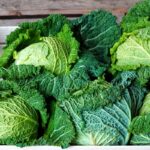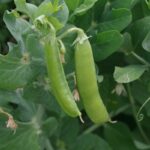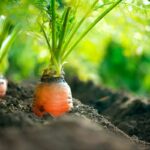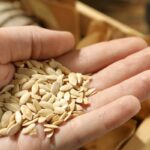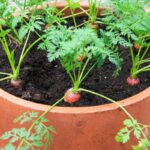Runner beans, or Phaseolus coccineus, are a staple in many gardens, loved not only for their decorative flowers but also for their edible pods.
Harvesting them at the right time ensures that you get the best flavour and texture – no one likes a stringy bean!
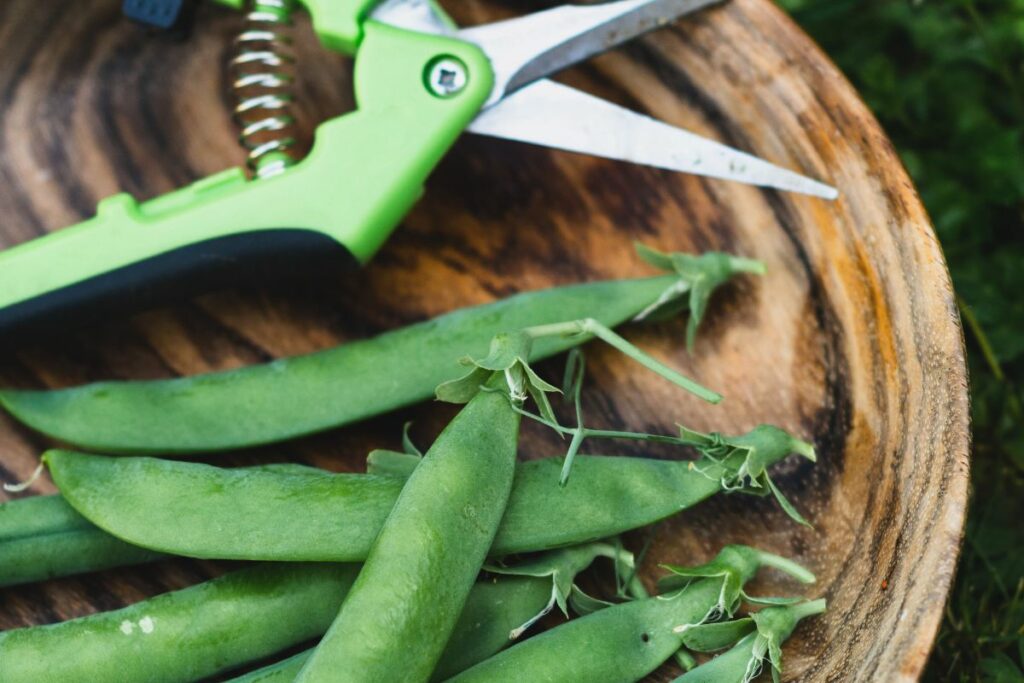
But when exactly is the right time?
In this article, I’ll tell you exactly what to look out for so you can harvest your
runner beans at exactly the right time.
Understanding The Growth Cycle
To know when to harvest runner beans, it’s first important to understand the growth cycle.
From sowing your runner bean seeds, they usually take about 12-14 weeks to mature.
The flowers appear first, followed by tiny beans that grow into mature pods.
The speed of this growth is influenced by factors such as soil health, water availability, and weather.
You may also like: How to choose the best fertilizer for your runner beans.
Factors To Consider When Harvesting Runner Beans
The Ideal Size
Mature doesn’t always mean large when it comes to runner beans.
The ideal size for harvesting is when the pods are about 15-20cm long. At this stage, they will be tender and full of flavour, without the tough, stringy texture that older pods develop.
If the seeds within have begun to bulge noticeably, you’ve probably waited a bit too long.
While these are still edible, they might be tougher and slightly bitter.
Timing Matters
Runner beans typically become ready for harvest between July and October.
The specific timing depends on when you planted them and the prevailing growing conditions.
But the key is regular checking. Once they start producing, you’ll need to check your plants every 2-3 days.
Swift and regular harvesting encourages the plants to produce more beans, prolonging your harvest season.
Weather Conditions
The elements play a significant role in determining when to harvest your runners.
Prolonged wet spells can make the pods swell and become waterlogged, potentially losing their flavour.
It’s wise to harvest before heavy rain to prevent this, if at all possible.

Harvesting Techniques And Top Tips
Knowing when to harvest is one thing, but doing it right is equally essential.
Always use scissors or secateurs to snip the beans off, rather than pulling them, to avoid damaging the plant.
This will ensure the longevity of your bean plants and continued production.
Taste Test
When in doubt, taste them!
Young runner beans are sweet, tender, and snap easily.
If you’re unsure about whether a pod is ready, snap off a small piece and taste it.
This is a simple and effective way to gauge the bean’s maturity and decide whether it’s time for the full harvest.
Storing Freshly Harvested Beans
Once you’ve harvested your runner beans, it’s crucial to store them correctly to retain their freshness.
If you’re not using them immediately, place them in a plastic bag in the refrigerator. They should last for up to a week.
For longer storage, blanch and freeze them.
Overlooked And Oversized Beans
If you’ve missed the optimum window and your beans have grown too large, don’t fret.
While they might be too tough to use as regular green beans, you can still salvage the situation.
Shell the beans and use them in soups, stews, or as a replacement for other beans in various recipes.
Regular Harvesting For Prolonged Production
One crucial point to remember is that the more you harvest, the more beans the plants will produce.
By regularly picking the pods, you encourage the plant to flower and fruit more abundantly, extending the harvesting period.
Preparing For The Next Season
After your harvesting season comes to an end, it’s time to prepare for the next.
Let a few beans mature and dry out on the plant.
These can be saved as seeds for the next planting season.
Store them in a cool, dry place until it’s time to sow again.
Final Thoughts
Runner beans are a delightful addition to any garden, both for their aesthetic appeal and their culinary value.
Harvesting them at the right time ensures you make the most of your crop, enjoying tender, flavoursome beans throughout the summer and into autumn (and even into the winter to go on your roasts if you’ve frozen your crop!)
Regular checks, understanding the signs of maturity, and being mindful of external factors like the weather will set you on the path to becoming a runner bean harvesting expert.
Ready to learn more? Here’s how you can grow runner beans in pots.
- Can You Grow Bell Peppers Indoors? A Guide For New Gardeners - November 14, 2023
- Composting Basics: Can You Compost Mushrooms? - November 6, 2023
- A Gardener’s Guide To Growing Carrots In Raised Beds - November 1, 2023


